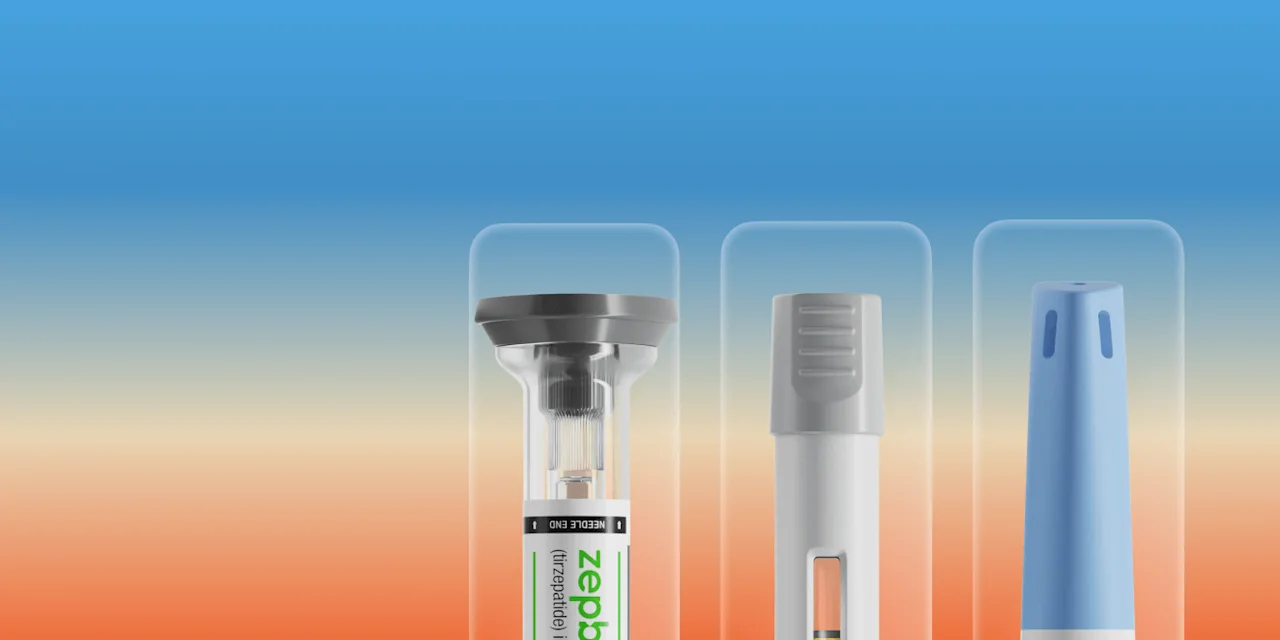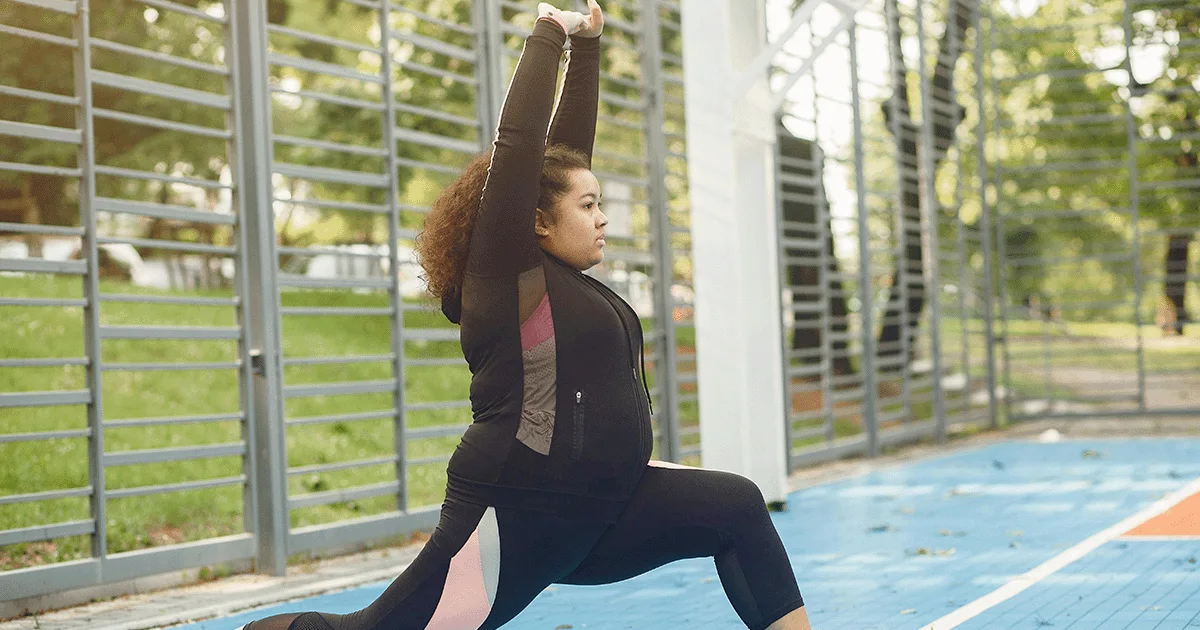Key takeaways
The pink salt trick involves drinking water with pink Himalayan salt and lemon for weight loss and other benefits.
There’s no scientific evidence to support that the pink salt trick works for weight loss.
Sticking to evidence-based practices, such as eating a healthy diet, exercising, and staying in a calorie deficit, is best for effective, safe, and sustainable weight loss.
Here's what we'll cover
Here's what we'll cover
Here's what we'll cover
Key takeaways
The pink salt trick involves drinking water with pink Himalayan salt and lemon for weight loss and other benefits.
There’s no scientific evidence to support that the pink salt trick works for weight loss.
Sticking to evidence-based practices, such as eating a healthy diet, exercising, and staying in a calorie deficit, is best for effective, safe, and sustainable weight loss.
On social media, supporters of the pink salt trick are in no short supply. They claim that mixing water, pink salt, and, sometimes, lemon can boost hydration, cut bloating, and even promote weight loss. But there’s little scientific evidence backing these supposed benefits.
Read on to learn what research and medical experts say about the pink salt trick, whether it works, and more.
What is the pink salt trick?
The pink salt trick is a wellness trend that involves mixing Himalayan pink salt with water, along with lemon or honey for flavor. Proponents claim it can energize, boost metabolism, and reduce bloating. However, there’s no scientific basis for these claims.
Their reasoning? The micronutrients in Himalayan salt (e.g. magnesium, potassium, and calcium) can help replenish electrolytes, support adrenal function, and stimulate metabolism.
However, there’s no scientific basis for these claims.
“Metabolism is a complex process influenced by many factors, and a small amount of salt won't significantly impact it," says Hans Schmidt, MD, FACS, co-director for the Center for Weight Loss and Metabolic Health at Hackensack University Medical Center.
Plus, “the amount of electrolytes, other than sodium, in pink salt is very small,” says Allison Childress, PhD, RDN, CSSD, LD, an associate professor in the Nutritional Sciences Department at Texas Tech University. “It is not a cure-all. It will not fix adrenal issues, electrolyte imbalances, or chronic fatigue.”
But what about weight loss?
Does the pink salt trick work for weight loss?
There’s no scientific evidence that the pink salt trick works for weight loss.
It might even backfire on you.
“Too much sodium can lead to water retention, which may actually lead to weight gain — however, this would be fluid gain, not fat gain,” Dr. Childress adds. This temporary fluid gain can make you feel and look bloated and puffy, not slimmer.
However, some research suggests that increasing your water intake may support weight loss by promoting a feeling of fullness (thus, helping you eat less) and helping to break down fat.
But let’s be very clear: We’re talking about plain, still water, and even still, it’s not a magical solution. Rather, calorie-free H2O can be a helpful component alongside healthy eating and regular exercise.
Ultimately, being in a calorie deficit (burning more calories than you consume) is the primary, evidence-based way to lose weight — and pink Himalayan salt has nothing to do with that.
“Most likely, the only beneficiaries of this 'trick' would be athletes who sweat a lot, or people in outdoor or physically demanding professions who sweat a lot,” Dr. Childress says.
This is because heavy sweating can deplete your body’s electrolytes. It’s important to replenish electrolytes, since they play a role in supporting your nerves, muscles, heart, and blood pressure, among other key bodily functions.
Is the pink salt trick safe?
Although drinking salty water may seem harmless, the pink salt trick isn’t safe for everyone.
“It can be dangerous, especially for people who have heart, kidney, or blood pressure issues,” Dr. Childress says. “People with high blood pressure, people with kidney disease, and people who are following a low-sodium diet should absolutely pass on this trend.”
This is because sodium can further increase blood pressure in those with hypertension. And if your kidneys aren’t functioning properly, they can’t filter out sodium as well. This can lead to a buildup, which can raise blood pressure and increase the risk of cardiovascular disease in people with chronic kidney disease.
It’s also important to note that most people do not need additional sodium. The average American already consumes nearly 50% more sodium than the recommended daily intake, Dr. Childress says.
So, chances are, you don’t need to consume any more with the pink salt trick (or another tactic).
Consuming too much lemon (or any citrus fruit) can also be risky if you struggle with acid reflux (GERD). When you have acid reflux, eating acidic citrus fruits may aggravate your symptoms.
Pink salt trick recipe: how to make the drink safely
Despite this info, you may still be wondering how to make the pink salt trick drink. If so, Dr. Childress recommends the following recipe to ensure you’re not adding too much salt.
8–12 oz cold water (about 1 cup)
~1/16 tsp of pink Himalayan salt
Squeeze of fresh lemon (optional for flavor)
1 tsp of honey or pure maple syrup (optional for flavor)

Alternatives to the pink salt trick for weight loss
Odds are the pink salt trick doesn’t actually help with weight loss or management. But there are other strategies that can help you lose weight safely and effectively.
Reduce your caloric intake
You might be consuming more calories than you think, which could derail weight loss efforts.
“Using a food log or app can help increase awareness and accountability,” Dr. Childress says.
Tracking your food is a good first step to get a baseline idea of your caloric intake. From here, you want to aim for a caloric deficit, which means you consume fewer calories than you burn daily.
Find your recommended calorie deficit
A calorie deficit happens when you consume fewer calories than you burn. It’s key to weight loss and can help guide your nutrition strategy. Use the tool below to estimate how many calories you need each day to reach your weight loss goals safely.
Maintain your current weight
----
cal daily
Lose one pound per week
----
cal daily
Time to achieve your __ goal weight
----
Weeks
This calculator gives a general estimate and isn't medical advice. Everyone's body is different. For guidance that’s tailored to your health and goals, it’s always best to speak with a healthcare provider.
Follow a balanced diet
One way to create a calorie deficit for weight loss is to base your meals around minimally processed foods, such as:
Fruits
Vegetables
Whole grains
Lean protein sources (e.g. eggs, fish, poultry)
Not only can these foods deliver many beneficial nutrients, but they also tend to be lower in calories. In Dr. Childress’ words: “These foods typically have lower energy density, which can help reduce one’s calorie intake naturally.”
You should also prioritize protein-rich meals. Protein increases satiety, which means it helps you feel fuller for longer, Dr. Childress adds.
Exercise regularly
Regular exercise is important not just for weight management but also for overall wellbeing, such as improving your cardiovascular health.
“Aim for at least 150 minutes of moderate-intensity or 75 minutes of vigorous-intensity aerobic activity per week,” Dr. Schmidt says.
You should also practice strength training two to three times a week to preserve lean body mass while you lose weight, Dr. Childress says.
Be sure to discuss with your healthcare provider before making any drastic changes to your routine.
Stay hydrated
Make sure to stay hydrated throughout the day.
“Mild dehydration can mimic hunger signals and derail weight loss efforts,” Dr. Childress says.
Drinking water before meals can help some people feel fuller and eat less food at mealtime, according to research. You can also drink plain sparkling water without added sugars.
Consult a healthcare provider
Struggling to lose weight even after making diet and lifestyle changes? A healthcare provider can offer personalized guidance based on your health status and goals. They may even recommend FDA-approved weight loss medications, such as Wegovy (semaglutide) and Zepbound (tirzepatide).
When combined with a balanced diet and regular exercise, these meds can help reduce appetite and promote weight loss. In clinical trials of Zepbound, for example, participants lost up to 20.9% of their body weight over the course of 72 weeks (about a year and a half), depending on the dose.
A reduced-calorie diet and increased physical activity are undisputed pillars of sustainable weight loss. But some people may need additional support to reach their goals. Sound like you? You can consult a healthcare provider in person or virtually, such as through Ro. In addition to offering access to weight loss medications (if you qualify), Ro also provides personalized support to help you achieve your weight loss safely and effectively.
Bottom line
Despite claims made on social media, the pink salt trick is not a fast pass to weight loss. Here’s what to keep in mind:
The pink salt trick is not a research-backed, legit way to lose weight, gain energy, or boost metabolism.
The pink salt trick can be unsafe if you have high blood pressure or any problems with your heart or kidneys, the pink salt trick is potentially unsafe.
Stick to proven ways to lose weight, such as eating a healthy diet and exercising regularly to stay in a caloric deficit.
If you’re struggling to lose weight despite lifestyle changes, contact a healthcare provider to discuss additional treatment options, such as certain medications like Wegovy and Zepbound.
Frequently asked questions (FAQs)
Can pink salt help you lose weight?
Pink salt, in and of itself, is unlikely to help you lose weight. There’s no evidence or scientific research that shows it can have this benefit.
What are the four ingredients in the pink salt trick?
The four ingredients in the pink salt trick are water, pink Himalayan salt, lemon, and honey. The last two ingredients are optional for added flavor.
How much Himalayan salt should you add to water for weight loss?
Drinking the pink salt trick is unlikely to lead to weight loss. But if you still want to drink it, make sure to only use a pinch of salt, which is about 1/16 tsp, according to Dr. Childress. Keep in mind that the recommended daily sodium limit is equal to about 1 tsp of salt. Paying attention to how much salt you add to this drink (and how much sodium you get in the rest of your diet) can help you stay within limits and avoid consuming too much.
Is pink salt healthier than table salt?
No, pink salt is not necessarily healthier than table salt. The main difference is that pink salt contains more trace minerals than table salt. But the amounts are too small to make a meaningful difference to your health.
How much sodium is safe in a day?
The general recommendation is to consume less than 2,300 mg of sodium per day, which is equal to about 1 tsp of table salt.
What about “sole” water brine?
“Sole” water or sole water brine is a variation of the pink salt trick. It involves mixing a large amount of Himalayan salt in water and letting it sit for 24 hours until it turns into a “brine.” At this point, people typically add 1 tsp of brine to 8 ounces of water for better sleep, hydration, and energy. But there’s no evidence or scientific research that supports these benefits. Plus, excessive sodium intake can be harmful.
DISCLAIMER
If you have any medical questions or concerns, please talk to your healthcare provider. The articles on Health Guide are underpinned by peer-reviewed research and information drawn from medical societies and governmental agencies. However, they are not a substitute for professional medical advice, diagnosis, or treatment.
Wegovy Important Safety Information: Read more about serious warnings and safety info.
Zepbound Important Safety Information: Read more about serious warnings and safety info.
References
Baker, L. B. (2017). Sweating Rate and Sweat Sodium Concentration in Athletes: A Review of Methodology and Intra/Interindividual Variability. Sports Medicine (Auckland, N.Z.), 47(Suppl 1), 111–128. doi: 10.1007/s40279-017-0691-5. Retrieved from https://pmc.ncbi.nlm.nih.gov/articles/PMC5371639/
Balfour, J. & Boster, J. (n.d.). Physical Activity and Weight Loss Maintenance. StatPearls. Retrieved on May 2, 2025 from https://www.ncbi.nlm.nih.gov/books/NBK572051/
Borrelli, S., Provenzano, M., Gagliardi, I., et al. (2020). Sodium Intake and Chronic Kidney Disease. International Journal of Molecular Sciences, 21(13), 4744. doi: 10.3390/ijms21134744. Retrieved from https://pmc.ncbi.nlm.nih.gov/articles/PMC7369961/
Fayet-Moore, F., Wibisono, C., Carr, P., et al. (2020). An Analysis of the Mineral Composition of Pink Salt Available in Australia. Foods (Basel, Switzerland), 9(10), 1490. doi:10.3390/foods9101490. Retrieved from https://pmc.ncbi.nlm.nih.gov/articles/PMC7603209/
Grillo, A., Salvi, L., Coruzzi, P., et al. (2019). Sodium Intake and Hypertension. Nutrients, 11(9), 1970. doi: 10.3390/nu11091970. Retrieved from https://pmc.ncbi.nlm.nih.gov/articles/PMC6770596/
Heidarzadeh-Esfahani, N., Soleimani, D., Hajiahmadi, S., et al. (2021). Dietary Intake in Relation to the Risk of Reflux Disease: A Systematic Review. Preventive Nutrition and Food Science, 26(4), 367–379. doi: 10.3746/pnf.2021.26.4.367. Retrieved from https://pmc.ncbi.nlm.nih.gov/articles/PMC8747955/
Jastreboff, A. M., Aronne, L. J., Ahmad, N. N., et al. (2022). Tirzepatide Once Weekly for the Treatment of Obesity. The New England Journal of Medicine, 387(3), 205–216. doi: 10.1056/NEJMoa2206038. Retrieved from https://www.nejm.org/doi/10.1056/NEJMoa2206038
Jeong, J. N. (2018). Effect of Pre-meal Water Consumption on Energy Intake and Satiety in Non-obese Young Adults. Clinical Nutrition Research, 7(4), 291–296. doi: 10.7762/cnr.2018.7.4.291. Retrieved from https://pmc.ncbi.nlm.nih.gov/articles/PMC6209729/
Kim, J. Y. (2021). Optimal Diet Strategies for Weight Loss and Weight Loss Maintenance. Journal of Obesity & Metabolic Syndrome, 30(1), 20–31. doi: 10.7570/jomes20065. Retrieved from https://pmc.ncbi.nlm.nih.gov/articles/PMC8017325/
Medline Plus. (2024). Fluid and Electrolyte Balance. Retrieved from https://medlineplus.gov/fluidandelectrolytebalance.html
U.S. Food and Drug Administration (FDA-a). (2024). Sodium in Your Diet. Retrieved from https://www.fda.gov/food/nutrition-education-resources-materials/sodium-your-diet
U.S. Food and Drug Administration (FDA-b). (2024). Sodium Reduction in the Food Supply. Retrieved from https://www.fda.gov/food/nutrition-food-labeling-and-critical-foods/sodium-reduction-food-supply













